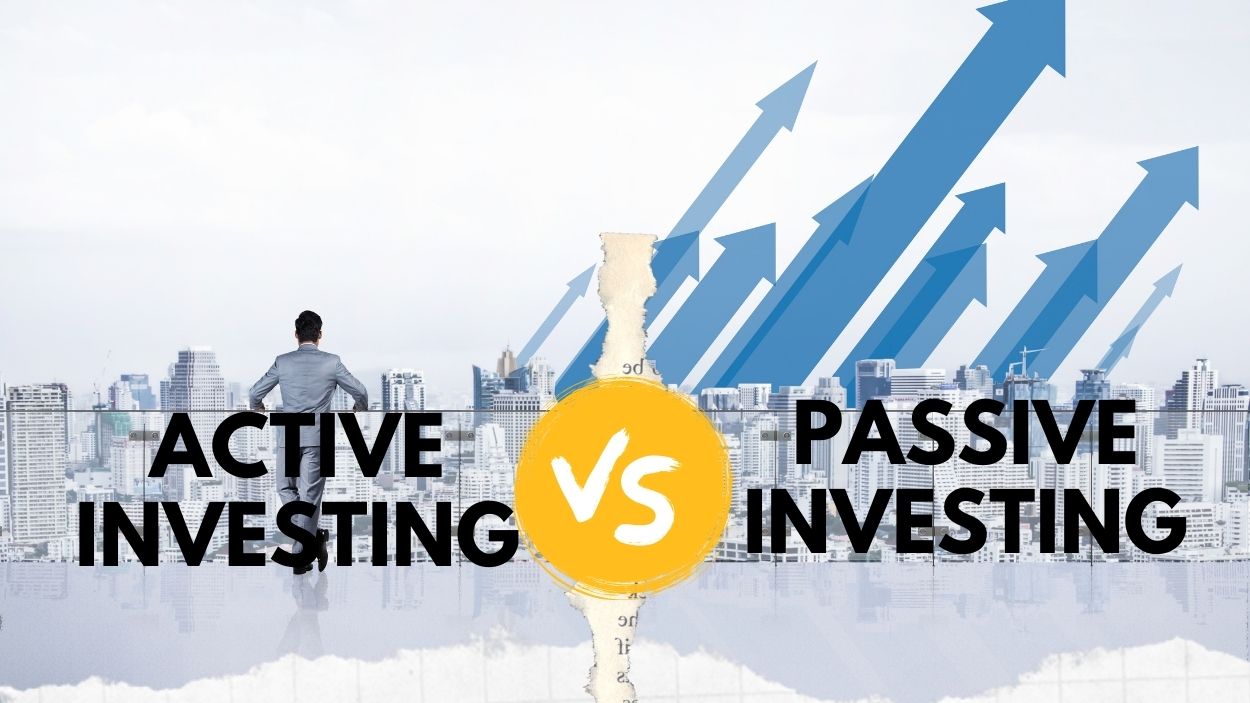Active vs passive investing: Most mutual funds are actively managed, which means they have a fund manager, who is kind of like the captain of a ship. Before starting a fund, the fund manager will write a blueprint that lays out his qualities and general rules for choosing securities. Then, as long as he’s the fund manager, he can buy and sell securities for that fund freely in order to outperform its benchmark, which is the average return on similar investments, or the benchmark itself. The mutual fund will grow and shrink based on how much money is put into it, but its holdings will stay the same as the fund manager has planned. This buying and selling is what makes this kind of investment interesting. You might say that active investing is a lot of messing around.
Active vs. Passive: Which is better?
Active investing is when you pay a person to buy and sell individual stocks through mutual funds on a regular basis. Investments in index ETFs rather than stocks are part of a passive investment strategy. To put it another way, active investing tries to beat the market, while passive investing tries to follow the market.
There isn’t much to do with a passive investing plan. People who are passive investors don’t try to do better than a benchmark, but instead try to do the same thing. There are many ways to be a passive investor.
For example, you could keep track of the stock market. It would be easy for them to do this by investing in a single exchange traded fund, which is a single investment that lets you invest in a lot of different companies (or bonds and real estate, too). Some of them might choose to invest in the S&P 500, which tracks the 500 largest US companies and is called the S&P 500. Other than the S&P 600, they might choose to invest in smaller companies that make up the S&P. They think that no matter how much their investments rise or fall in the short term, they’ll likely grow over time. Passive investing can be done through index mutual funds, exchange traded funds (ETFs), or a robo-advisor.
Passive investors believe that over the long term, they will benefit from both the long-term upward trend of the markets and the low management expenses of passive investments. In active investing, Investment fund managers and their staff aren’t cheap, but investors pay for their salaries and other costs, too.
Expenses In Active vs Passive
In general, active management fees are in the near about 1%, while index ETF fees are usually in the range of 0.05% to 0.250%. The fees that robo-advisors charge are somewhere in the middle. Many charge around 0.50 percent.
If you want to make money by investing, Warren Buffett, who is one of the richest people in the world because he picks the best companies and stocks to invest in, has spent the last few decades telling everyone else not to do the same.
In the past, Buffet has said that he wants his heirs to invest the majority of their inheritance in low-cost, well-diversified stock funds when he dies.
Index mutual funds and ETFs are a better way to invest than picking individual stocks. This is because you’re doing something called “diversification,” which is better than picking individual stocks.
Best way to invest : Active vs Passive Investing
One of the best ways to get your money spread out is by investing with an automated adviser like robo-advisor. As a rule, they invest your money in a lot of ETFs and mutual funds that let you invest in a lot of different kinds of things. This way, you can spread your money out across a lot of different industries and markets. Many robo-advisors will also make sure that you never have too much money in one investment.
Returns Active Vs Passive Investing
When you invest actively, you have the chance to make a lot of money at some point in time. Perkins Discovery Fund (PDFDX) is a small cap fund that invests in small businesses. If you bought it in 2017, you would have made 39.51 percent on your money. If you’d been passively invested in Vanguard’s 500 Index Fund (VFINX) during the same time, you’d only have made 18.5 percent. That’s less than half of the actively traded fund’s gains. But this gives a misleading picture.
During the 10 years from November 2008 to November 2018, the index fund outperformed the actively managed fund more than 6%. This is a truth that people who prefer to invest passively keep repeating over and over again. There are many active funds that outperform passive funds in the short term, but in the long run, they will not be able to outperform them as much. Study after study has shown that over 80% of actively managed funds fail to outperform passive investments over the long term.
Because the truth of the matter is, no one can ever say for sure what will happen in the market. Investments are risky. Past results is not a guarantee, but as imperfect predictors of future results. So know that when you invest in the stock market, there’s a chance you could lose some of your money, or even all of it.
Active Portfolio Management And Passive Portfolio Management
It doesn’t matter which way you choose to invest your money. You can do it on your own or with the help of someone else. You might think you can build a good, solid, balanced portfolio on your own and choose to buy your own ETFs by making trades. Another option is to sign up for a robo-advisor who will invest your money for you based on your needs and time. Any investment strategy you choose, try not to make changes along the way that are based on your emotions. There’s probably never been a worse way to invest than trying to predict when stock prices will rise or fall.
Bottom Line
It’s important to remember what we told you earlier. Fees will eat away at your gains. People who work for money managers usually charge you a fee for their services. This fee will likely eat up about 1% of your portfolio each year. If your manager is a fan of active investing and buys a lot of mutual funds with their own MERs of around 1%, you now have to overcome a 2% loss every year to even break even.
Invest Wisely
Also Read


